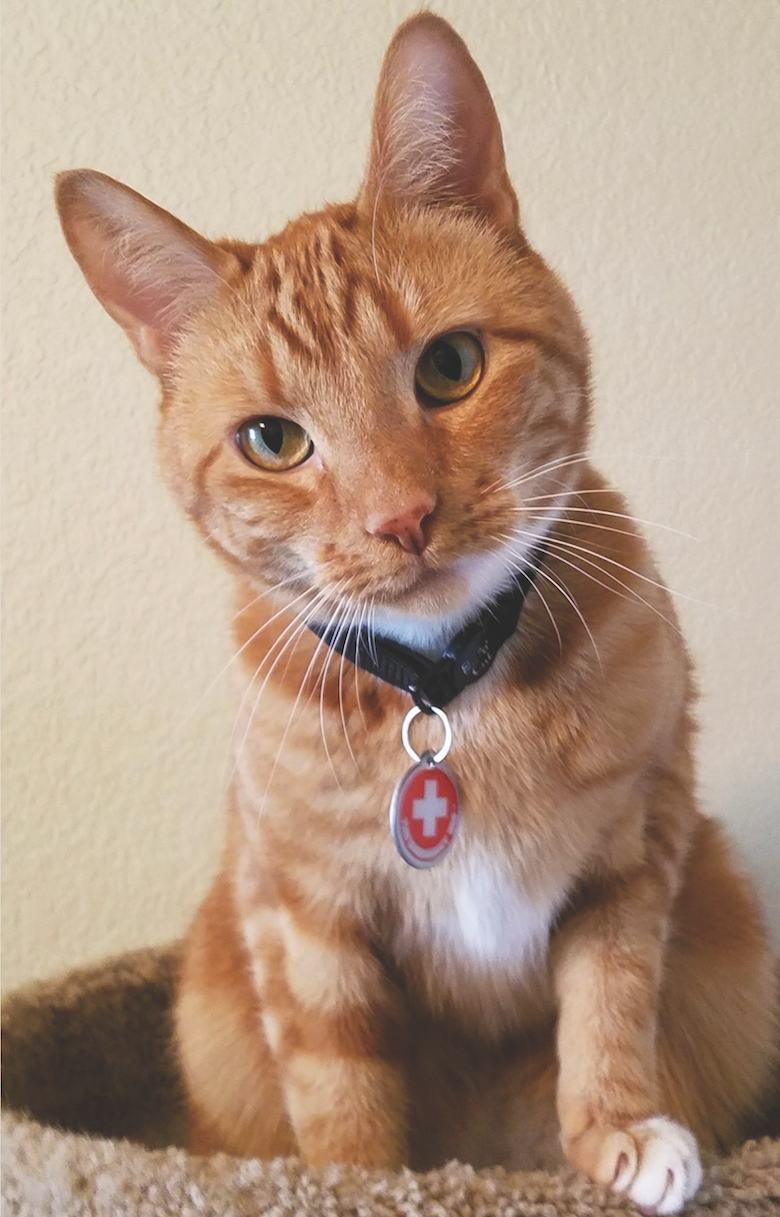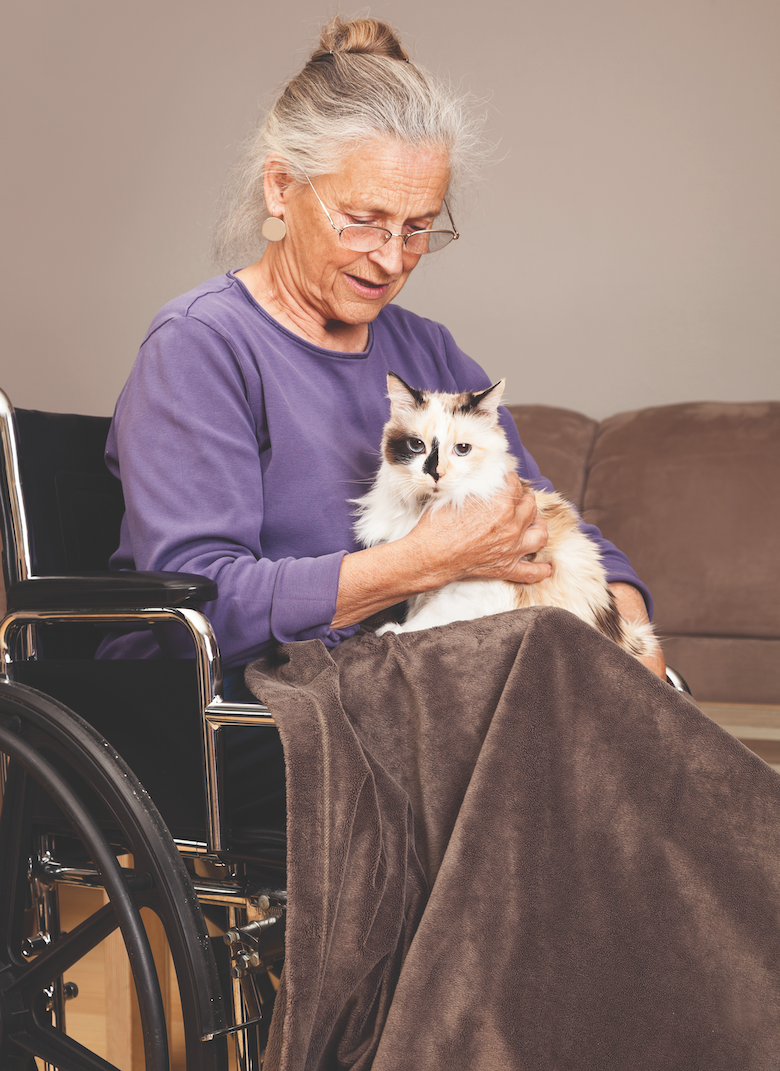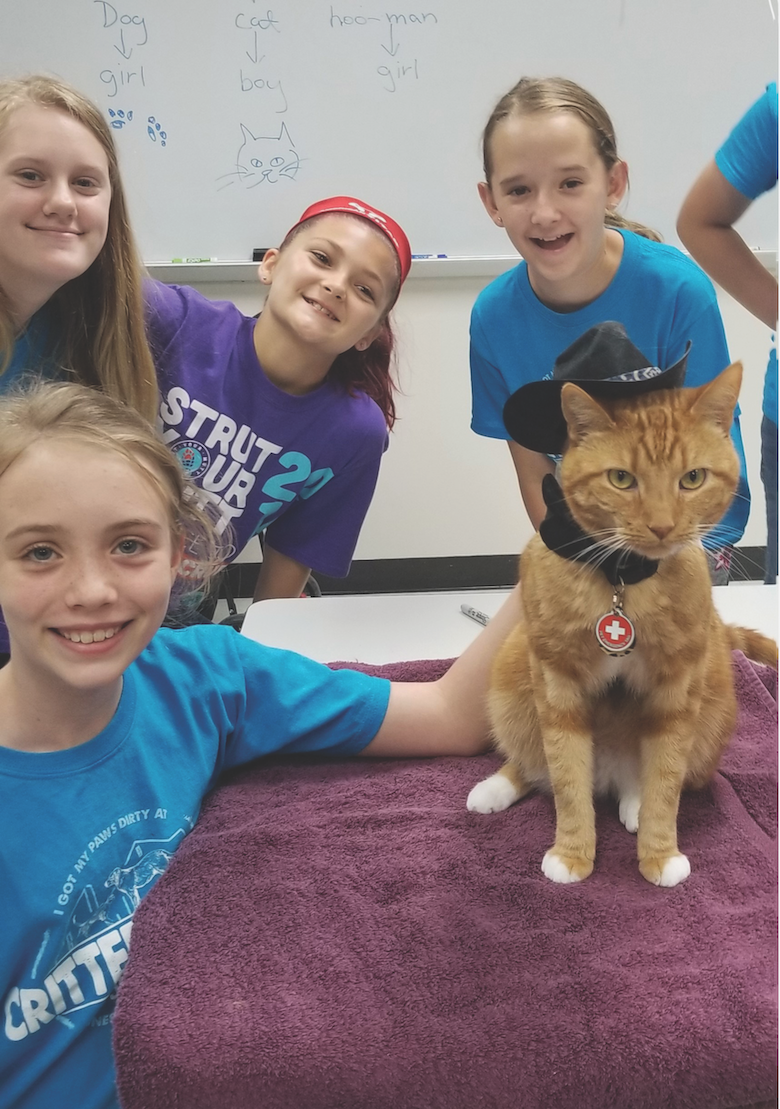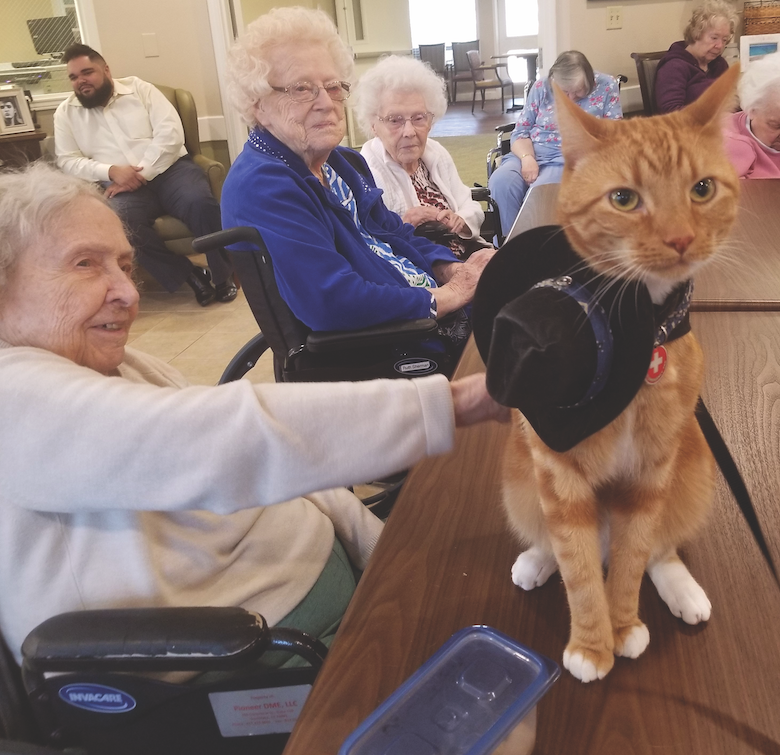Does Your Kitty Have What It Takes to be a Therapy Cat?
The post Does Your Kitty Have What It Takes to be a Therapy Cat? by Sandy Robins appeared first on Catster. Copying over entire articles infringes on copyright laws. You may not be aware of it, but all of these articles were assigned, contracted and paid for, so they aren't considered public domain. However, we appreciate that you like the article and would love it if you continued sharing just the first paragraph of an article, then linking out to the rest of the piece on Catster.com.
The extensive scientific research endorsing the health benefits of being around felines has boosted interest in therapy cats nationwide. They provide a healing “fur fix” to those suffering from physical and mental health issues, recovering from surgeries, or experiencing anxiety and even loneliness. Simply put, the job of a therapy cat is to bring joy and happiness. Many hospitals now include pet therapy as a part of their “treatment plan,” while more and more kids’ camps and senior residences are inviting them to come and entertain with therapeutic love and purrs.

Photo: Suemack | Getty Images
Related: Meet Xeli, the Airport Therapy Cat
According to Elisabeth Van Every, communications and outreach specialist for Pet Partners, the country’s largest pet therapy registry organization, “Dogs are still the most popular therapy animals because they have the innate qualities that a good therapy animal needs.”
Although the number of cats with these qualities is lower, “we’ve definitely seen that cats do have these abilities, and our therapy cat handlers are proud of their feline partners.”

Photo: jonya | Getty Images
Meet pet therapy cat Casey
More people nationwide have met therapy cat Casey than any other working therapy feline. Apart from cramming lots of personal therapy visits into his schedule, he assists his cat mom, Arden Moore, when she presents her veterinarian-approved pet first-aid/CPR classes around the country. He is also the “star” of Arden’s latest book, A Kid’s Guide to Cats (Storey Publishing, 2020), giving advice and tips to kids from a cat’s point of view.
Arden adopted the handsome tabby from the San Diego Humane Society when he was a 4-month-old kitten.
“I was looking for a smart, inquisitive and confident feline to be my pet safety cat for my Pet First Aid 4U program,” Arden says. “From the moment we met, he accepted being held and playing with a wand toy. I, of course, immediately fell in love with him, and we’ve been together six years.”

Photo: Arden Moore
An owner’s guide to a great therapy cat
People-loving cats make great therapy cats. Arden says there’s no question that Casey loves people.
“Because he is so social, he likes to meet all types of people and visit all types of places,” she says. “But I believe his therapy visits with his senior ‘Brookdale Buddies’ are his favorites. When we get ready to head out for a therapy visit, he is inside his carrier in the back seat, and I will say, ‘Hey, Casey, ready to go visit our Brookdale buddies?’ And he will immediately speak in a chirpy tone. He has let many kids at the SPCA of Texas Critter Camp as well as residents at the Brookdale Memory Care Center in Dallas walk him on a leash or push his pet stroller down the hallways. He always accepts treats gently — never nipping or clawing.”
To set Casey up for success, Arden socialized him from the start.
“I purposely touched and pressed his paw pads, handled him from ears to tail, even blew ‘bubbles’ on his belly,” she says. “He never reacted angrily or drew out his claws or tried to nip me. He even sits calmly in my lap when it is time for his ‘mani-pedi’ nail-trimming sessions.”
She introduced Casey to all types of people and pets from kittenhood, and he never hissed, attacked or attempted to escape or hide.
“I often say that Casey has never met a stranger or been in a strange place,” Arden says. “He adapts quickly to people and situations — a good quality to have to be a therapy cat.”
Arden also put in extra hours with Casey to ensure that he will come on cue, walk on a leash, ride happily in a pet stroller, sit, greet with a high five and do a slow spin.
“Initially, during training sessions, I used clickers and target sticks and gradually was able to fade them out and use my voice and hand signals,” she says. She believes it’s the little tricks that make a truly endearing therapy cat, as they help people to relax and enjoy being in their presence. A great therapy cat also likes to learn — and it helps if the cat is food-motivated.
Arden dials it up another notch, ensuring Casey always makes a grand entrance wearing a black cowboy hat and riding proudly in his pet stroller. It sets a fun tone for the visit.

Photo: Arden Moor
Pet therapy registries
All therapy cats need to be registered with an organization such as Love on a Leash (where Casey is registered) or Pet Partners. Apart from the relevant paperwork that covers everything from the pet’s health and behaviors, all pets have to undergo a number of supervised visits to ensure that they are “right for the job.” Further, a therapy feline is required to always be up-to-date on all necessary health vaccines and flea/tick preventives and get regular wellness exams.
“Casey had to complete 10 supervised visits,” Arden says. “We picked the Brookdale Memory Care Center in Dallas. A Brookdale supervisor had to verify that Casey behaved politely at each visit. He quickly completed these requirements, all the while purring like a Mack truck!
“He never shies from being petted. He never hides in his stroller. And, he likes to walk on a leash and stop to greet people. I am blessed to have such a great cat who is bringing smiles to so many people!”
Personality traits and cat requirements
Both Love on A Leash (loveonaleash.org) and Pet Partners (petpartners.org) have excellent information about therapy cats and how to go about registering and working with them. They have branches around the country.
Apart from a calm demeanor and enjoying being petted, Love on a Leash outlines the following requirements for prospective therapy cats:
✤ Must be open to new experiences, changes in routine and visiting different places
✤ Must be comfortable in a car and not suffer from motion sickness
✤ Must be at least 1 year old
Pet Partners highlights working with an organization that has a pet therapy partner program that includes benefits such as:
✤ Comprehensive insurance coverage for both the handler and the pet while on volunteer visits
✤ Access to tools to help you find places and opportunities to visit
✤ Access to relevant online courses available free or at discounted prices
✤ An ID badge with a picture of you and your pet to wear while visiting
If you think your feline has got what it takes to give love and affection to total strangers, consider following some of Arden’s cues, and register your cat to be an official therapy cat; it’s a great way to give back to your community.
Featured photo: Arden Moore
Read Next: Is One of Your Cats Not as Cuddly as the Others?
The post Does Your Kitty Have What It Takes to be a Therapy Cat? by Sandy Robins appeared first on Catster. Copying over entire articles infringes on copyright laws. You may not be aware of it, but all of these articles were assigned, contracted and paid for, so they aren't considered public domain. However, we appreciate that you like the article and would love it if you continued sharing just the first paragraph of an article, then linking out to the rest of the piece on Catster.com.




Post a Comment